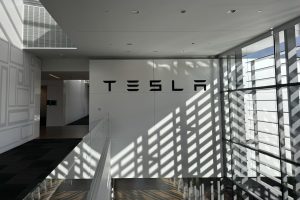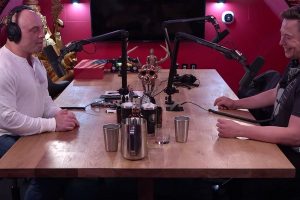- 💰 Wall Street veteran and Tesla bull Gary Black suggests that Tesla could have benefited from a Super Bowl ad this year instead of a $1,000 Model Y price cut.
- 🏈 Super Bowl ad spots are sold at a premium, with a 30-second advertisement costing about $7 million on average.
- 📺 A Super Bowl ad could potentially reach nearly 100 million people, offering significant exposure for automakers like Tesla.
- 🚗 Gary Black estimates that Tesla would only need to sell 875 incremental cars with an $8,000 gross profit per unit to justify the cost of a 30-second Super Bowl ad.
- 🤔 Tesla’s $1,000 Model Y discount, while significant, might not garner the same level of attention and follow-up interest as a Super Bowl ad.
- 🚘 Tesla has compelling advertisements, including those for the Cybertruck, which could have worked well for the Super Bowl.
- 📈 There’s growing support among EV fans and Tesla investors for the idea of Tesla investing in a Super Bowl ad to increase brand awareness and educate potential customers.
In the realm of automotive marketing, strategic advertising plays a pivotal role in shaping brand perception, driving consumer engagement, and ultimately influencing purchasing decisions. Recently, Wall Street veteran and Tesla advocate Gary Black ignited a debate within the EV community by suggesting that Tesla could have benefited significantly from investing in a Super Bowl ad instead of implementing a $1,000 discount on its Model Y. Let’s delve deeper into this discourse and explore the potential implications of such a marketing move for Tesla.
The Power of Super Bowl Advertising
The Super Bowl stands as one of the most-watched events globally, with millions of viewers tuning in each year. Ad spots during this premier sporting event are sold at a premium, reflecting the unparalleled reach and impact of Super Bowl commercials. With an estimated audience of nearly 100 million people, a well-crafted Super Bowl ad has the potential to elevate brand visibility and resonate with diverse demographics.
Gary Black’s Proposal
Gary Black’s proposition revolves around the idea that Tesla could have maximized its marketing impact by investing in a Super Bowl ad instead of opting for a price reduction on its Model Y. According to Black, the cost of a 30-second ad during the Super Bowl averages around $7 million. He suggests that if Tesla were to allocate this budget towards a captivating commercial, the return on investment (ROI) in terms of brand exposure and potential sales could outweigh the benefits of a price cut.
Crunching the Numbers
Black’s analysis delves into the financial implications of such a decision. He estimates that Tesla would only need to sell 875 incremental cars, each with an $8,000 gross profit margin, to justify the cost of a Super Bowl ad. This calculation underscores the potential ROI and long-term benefits of leveraging Super Bowl advertising to amplify Tesla’s market presence.
Evaluating the Alternatives
While a $1,000 discount on the Model Y undoubtedly attracts attention, it may not generate the same level of buzz and brand recall as a high-impact Super Bowl commercial. Tesla’s existing advertising materials, particularly those showcasing the innovative features of vehicles like the Cybertruck, could have served as compelling content for a Super Bowl ad, resonating with a diverse audience and bolstering brand perception.
The Growing Support for Super Bowl Advertising
Beyond Gary Black’s advocacy, there’s a groundswell of support among EV enthusiasts and Tesla investors for the notion of Super Bowl advertising. As the electric vehicle market continues to expand and competition intensifies, strategic marketing initiatives become increasingly crucial for differentiating brands, fostering consumer loyalty, and driving sustainable growth.
Conclusion: A Missed Opportunity?
In retrospect, the debate surrounding Tesla’s marketing strategy raises intriguing questions about the balance between short-term incentives and long-term brand-building efforts. While price cuts may offer immediate sales boosts, the intangible benefits of Super Bowl advertising in terms of brand equity, consumer engagement, and market positioning cannot be overlooked. As Tesla navigates the dynamic landscape of automotive marketing, the discussion sparked by Gary Black’s proposal serves as a catalyst for reevaluating the company’s approach to strategic advertising and brand communication.
Check out BMW, Volkswagen, and KIA’s EV ads for Super Bowl LVIII below.





